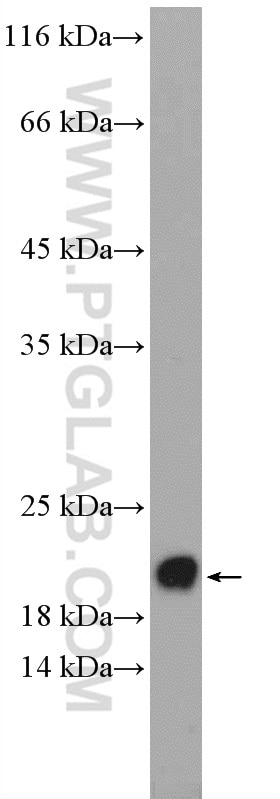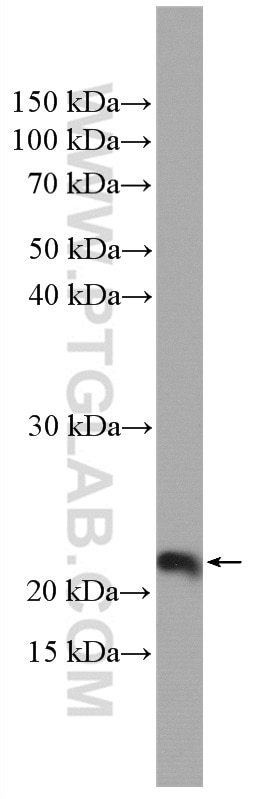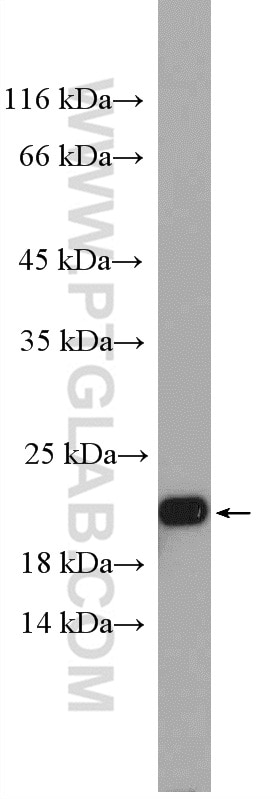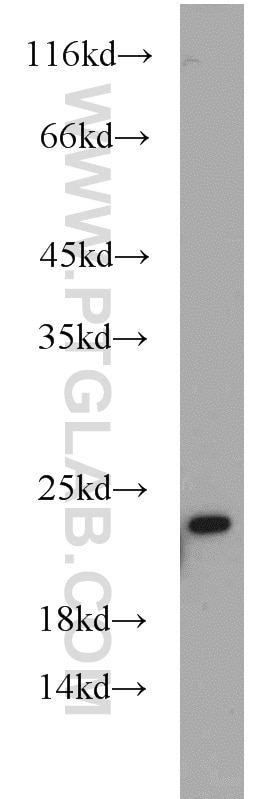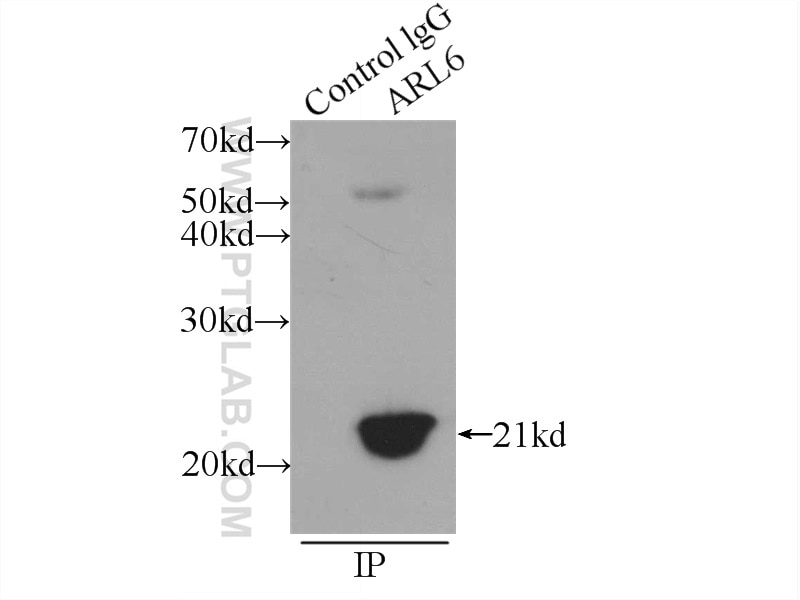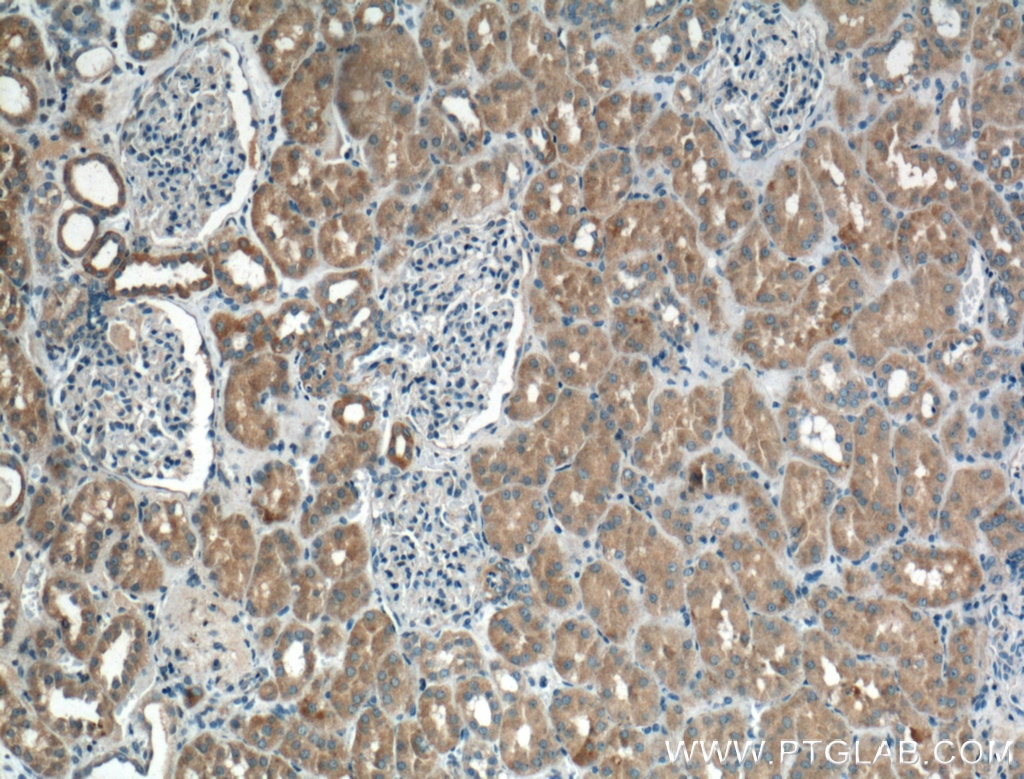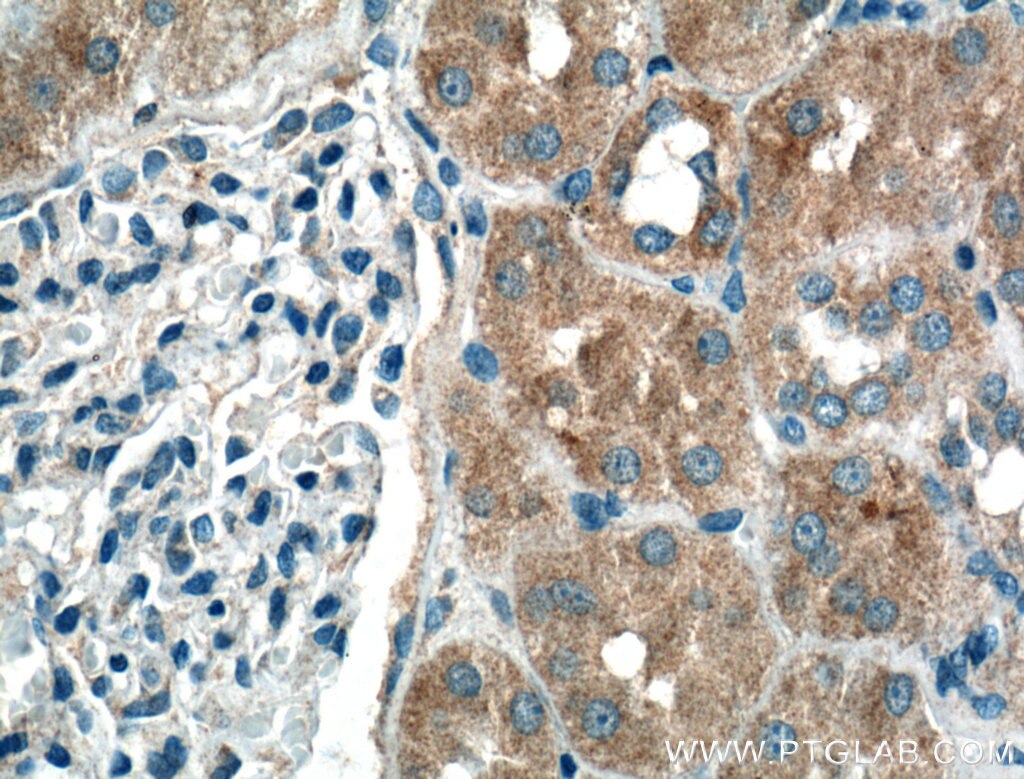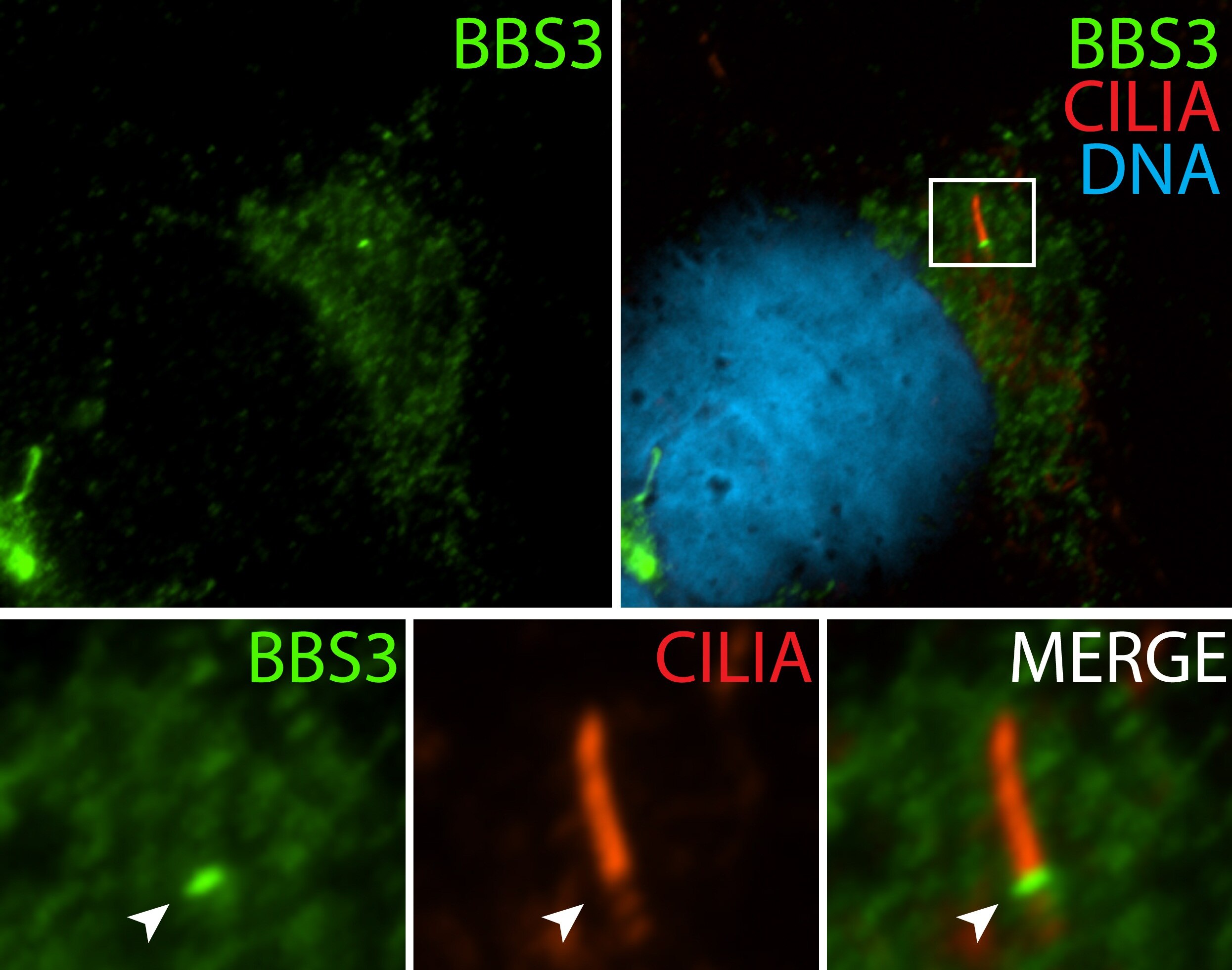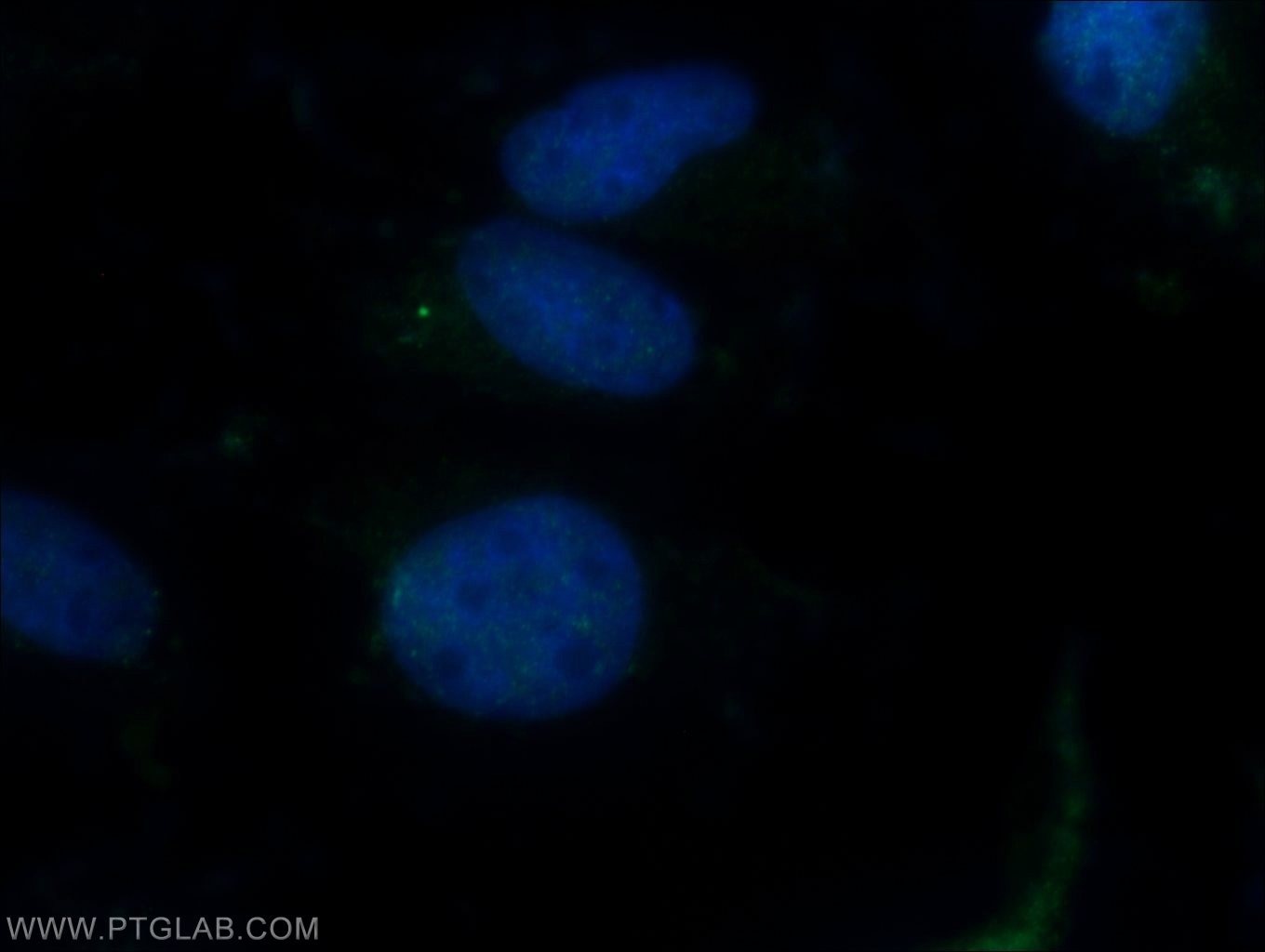- Phare
- Validé par KD/KO
Anticorps Polyclonal de lapin anti-BBS3
BBS3 Polyclonal Antibody for WB, IP, IF, IHC, ELISA
Hôte / Isotype
Lapin / IgG
Réactivité testée
canin, Humain, rat, souris
Applications
WB, IHC, IF/ICC, IP, ELISA
Conjugaison
Non conjugué
N° de cat : 12676-1-AP
Synonymes
Galerie de données de validation
Applications testées
| Résultats positifs en WB | tissu cérébral de rat, cellules HEK-293T, tissu cérébral de souris, tissu cérébral humain |
| Résultats positifs en IP | tissu cérébral de rat |
| Résultats positifs en IHC | tissu rénal humain, il est suggéré de démasquer l'antigène avec un tampon de TE buffer pH 9.0; (*) À défaut, 'le démasquage de l'antigène peut être 'effectué avec un tampon citrate pH 6,0. |
| Résultats positifs en IF/ICC | cellules hTERT-RPE1, cellules MDCK |
Dilution recommandée
| Application | Dilution |
|---|---|
| Western Blot (WB) | WB : 1:500-1:2000 |
| Immunoprécipitation (IP) | IP : 0.5-4.0 ug for 1.0-3.0 mg of total protein lysate |
| Immunohistochimie (IHC) | IHC : 1:50-1:500 |
| Immunofluorescence (IF)/ICC | IF/ICC : 1:20-1:200 |
| It is recommended that this reagent should be titrated in each testing system to obtain optimal results. | |
| Sample-dependent, check data in validation data gallery | |
Applications publiées
| KD/KO | See 2 publications below |
| WB | See 6 publications below |
| IHC | See 1 publications below |
| IF | See 4 publications below |
Informations sur le produit
12676-1-AP cible BBS3 dans les applications de WB, IHC, IF/ICC, IP, ELISA et montre une réactivité avec des échantillons canin, Humain, rat, souris
| Réactivité | canin, Humain, rat, souris |
| Réactivité citée | Humain, souris |
| Hôte / Isotype | Lapin / IgG |
| Clonalité | Polyclonal |
| Type | Anticorps |
| Immunogène | BBS3 Protéine recombinante Ag3363 |
| Nom complet | ADP-ribosylation factor-like 6 |
| Masse moléculaire calculée | 186 aa, 21 kDa |
| Poids moléculaire observé | 21 kDa |
| Numéro d’acquisition GenBank | BC024239 |
| Symbole du gène | ARL6/BBS3 |
| Identification du gène (NCBI) | 84100 |
| Conjugaison | Non conjugué |
| Forme | Liquide |
| Méthode de purification | Purification par affinité contre l'antigène |
| Tampon de stockage | PBS avec azoture de sodium à 0,02 % et glycérol à 50 % pH 7,3 |
| Conditions de stockage | Stocker à -20°C. Stable pendant un an après l'expédition. L'aliquotage n'est pas nécessaire pour le stockage à -20oC Les 20ul contiennent 0,1% de BSA. |
Informations générales
ADP-ribosylation factor-like protein 6 (ARL6), belongs to a small GTPase superfamily, is involved in membrane protein trafficking at the base of the ciliary organelle. ARL6 is also named Bardet-Biedl syndrome 3 protein, because defects in ARL6 are a cause of Bardet-Biedl syndrome type 3 (BBS3), which is a genetically heterogeneous disorder characterized by usually severe pigmentary retinopathy, early onset obesity, polydactyly, hypogenitalism, renal malformation and mental retardation. ARL6 can interact with many ARL6 interacting proteins and form BBSome complex with other BBS proteins including BBS1, BBS2, BBS4 and so on.
Protocole
| Product Specific Protocols | |
|---|---|
| WB protocol for BBS3 antibody 12676-1-AP | Download protocol |
| IHC protocol for BBS3 antibody 12676-1-AP | Download protocol |
| IF protocol for BBS3 antibody 12676-1-AP | Download protocol |
| IP protocol for BBS3 antibody 12676-1-AP | Download protocol |
| Standard Protocols | |
|---|---|
| Click here to view our Standard Protocols |
Publications
| Species | Application | Title |
|---|---|---|
EMBO J Rabl2 GTP hydrolysis licenses BBSome-mediated export to fine-tune ciliary signaling. | ||
Proc Natl Acad Sci U S A ARL13B, PDE6D, and CEP164 form a functional network for INPP5E ciliary targeting.
| ||
PLoS Genet BBSome function is required for both the morphogenesis and maintenance of the photoreceptor outer segment. | ||
Bone Bardet-Biedl Syndrome 3 regulates development of cranial base midline structures.
| ||
Biol Open ARL3 and ARL13B GTPases participate in distinct steps of INPP5E targeting to the ciliary membrane. |
